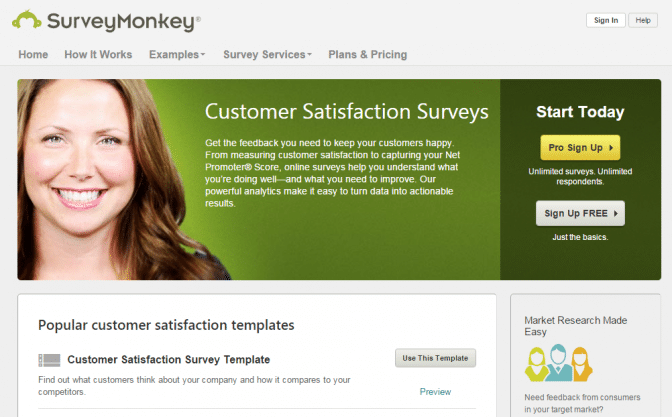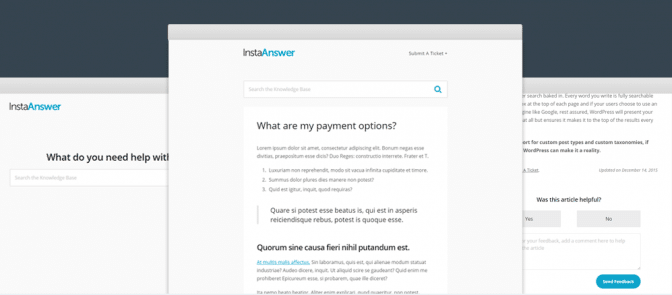Whether you’re dealing with virtual or physical goods, a Frequently Asked Questions section is a multi-purpose workhorse that can complement your wider support efforts and can even act as a key piece of marketing collateral for potential customers.
Putting together the perfect FAQ for your products requires a little upfront investment in terms of time and resources. It’s important you follow a logical step-by-step process when you’re tackling this task in order to produce a quality end product (and avoid losing your mind in the process).
Fear not, however! In this article we’ll walk you through a straightforward set of steps for creating (and keeping updated) a flawless FAQ.
Let’s start with what you’ve already got.
Review Your Existing Product Collateral
You may not yet have an all-singing, all-dancing product FAQ effortlessly solving customer problems, but you’ve definitely already got some product materials (marketing or otherwise) kicking around out there in the wild.
Now is an excellent time to gather everything currently relating to your product(s) into one place for review. Marketing materials, installation guides, existing product pages, internal usage guidelines – they all count. Even a quick dive into the assembled material should be enough for you to start identifying obvious ‘information holes’ and spark initial ideas in terms of topics and organization.
Understand What Users Have Already Told You
If you’ve been selling your product for any significant length of time, the chances are you’re already sitting on a goldmine of real customer feedback that can usefully be sifted through for valuable FAQ nuggets.
Get a handle on what type of information real, live people are already clamoring for by asking all staff members in customer facing positions to review their email and phone records for questions that they’ve faced more than once. Don’t just limit this to the folks in sales and customer support. Other departments such as billing, design, and development have a role to play as well.
Survey Your Customers
As a final part of your initial information gathering, reach out to existing users of your product in the form of an incentive-led customer survey. Straightforward and affordable tools such as Polldaddy, Typeform and SurveyMonkey can be set up in minutes and enable you to carry out surveys online with ease.

Keep your questions manageable, explicitly ask your users for pain points they’ve experienced with your product to date, and throw in a suitable future discount or special offer as a reward for feedback.
By this stage, you should be sitting on a mountain of potentially useful raw material. Now it’s time to get it online.
Use Structure and Search to Bring Order to Your FAQ
Dumping a wall of poorly formatted text into one long, rambling FAQ page is a recipe for user despair. You’re looking for a combination of intuitive search and clean presentation on the front end, supported by a logical division of structure on the back end – two approaches you’ll see used to excellent effect in our KnowAll theme.

Whether you end up using it or not, a brief browse around the KnowAll demo page should be enough to highlight several points you’ll want to incorporate in your own FAQ pages:
- Fast, intuitive AJAX-enabled search should come as standard.
- Break your information out into single, focused pages rather than making users fight through walls of text.
- Users are as likely to be looking for answers on mobile as anywhere else, so your pages have to display perfectly across different device sizes.
- Grouping information by category brings order. In the case of KnowAll, our powerful Heroic Knowledge Base is doing the heavy lifting behind the scenes in terms of structure.
- Don’t be afraid to embrace video. Brief video walkthroughs for commonly faced issues can take a product FAQ page from good to great.
A FAQ section can literally be just one page, but you’ll do well to adopt a resource that offers ease of search and depth of coverage. The more work you do on this front, the less burden your support team will shoulder.
Put Your FAQ at the Heart of Your Pre- and Post-Sale Processes
The hard work shouldn’t end with v1.0 of your FAQ. Once you’ve got the beginnings of a comprehensive resource to point users toward, you want to make every effort to enlist their help in making it even better over time.
Start by making sure that you’re actively soliciting feedback on every page of your FAQ. If there’s a crucial piece of information missing anywhere, you want to know about it as soon as possible.
You also want to be explicitly pointing visitors to these pages at every stage of the buying cycle – from pre-sales queries all the way through to post-purchase support.
Conclusion
A carefully maintained FAQ will pay off handsomely for years to come. After following our suggestions, make sure to schedule a full review of your efforts on at least an annual basis to make sure standards aren’t slipping.
Let’s recap the steps we covered above:
- Review all existing product collateral to identify blind spots and spark ideas.
- Get your team involved in surfacing common product questions that come in through your various support channels.
- Actively survey existing customers to discover issues they’ve faced.
- Implement your FAQ with search functionality and intuitive categorization.
- Constantly push prospects and customers to your FAQ pages post-launch and solicit follow-up.
We’d love to get feedback on how you’ve tackled your own product FAQs, and whether we’ve missed a trick anywhere above. Get in touch via the comments section below and let us know!
The post 5 Tips to Putting Together the Perfect Product FAQ appeared first on HeroThemes.

